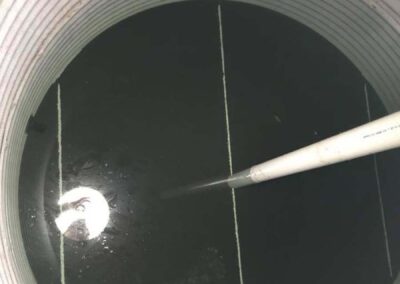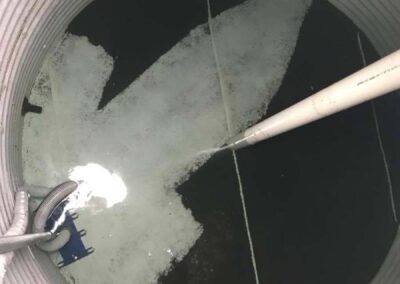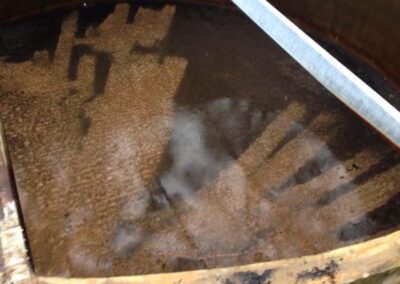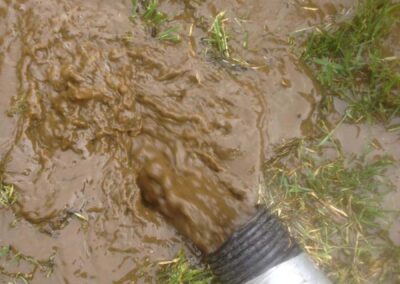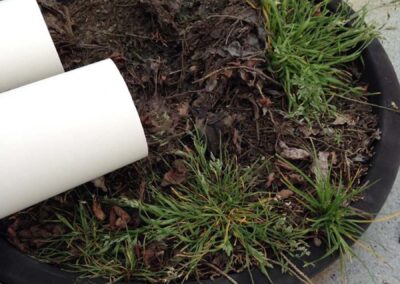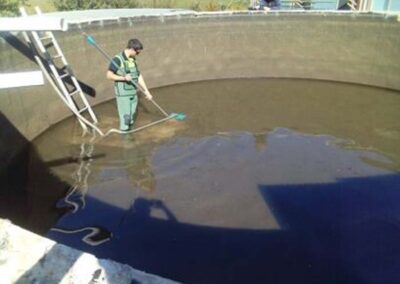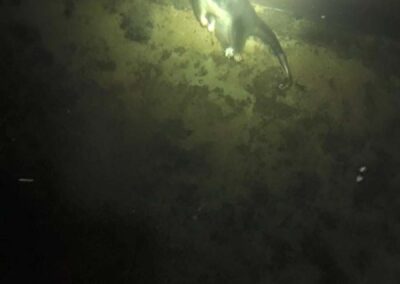Tank Cleaning
Compass TanksCall Us
Rain Water Tank Cleaning
When it comes to caring for your rainwater tank, the rule is: LOW maintenance, not NO maintenance!
Approximately 62 per cent of South Australians store rainwater for regular use such as drinking, washing and watering gardens. However, only 17 percent actually keep their rainwater healthy through annual tank cleaning, combined with pre and post tank filtration and maintenance. Every household should take responsibility for the health and safety of their rainwater and storage tank. It is a common misconception that if the water looks clean it must be okay. Water in a poorly maintained tank inevitably contains bacteria and other impurities.
Rain Water Tank Cleaning FAQ’s
Is it important to have my tank regularly cleaned?
YES! Firstly it is important for your health that your water is kept clean. Secondly, it will prolong the life of your tank. Keeping gutters clean will help to keep tank clean, however it is not possible to keep out everything. Animals such as frogs, birds and possums are commonly found dead inside tanks. Leaves and other organic material will break down inside tanks and the tannins are very corrosive, shortening the life of your tank.
Will I lose all my water when my tank is cleaned?
No! Our method of cleaning tanks means that there is minimal water loss. However, there are times when the water is so contaminated that you need to evaluate the health risks associated with holding on to it. Sometimes, it can be best to clean out the debris, dump all the remaining water and and start with fresh clean water next time it rains. But this is always the last resort.
Do you scrub down the walls of the tank or high pressure clean the inside of the tank?
No, tank cleaning involves vacuuming the debris off the floor of the floor of the tank, similar to a swimming pool clean.
How often should I have my tanks cleaned?
Firstly, if your tank is equipped with a basket filter this will greatly assist in keeping debris out of your tank. Keep in mind, that you must periodically empty the basket filter. Otherwise the filter will fill up with debris (and possibly a dead animal carcass or two) and your rainwater will filter through this sludge before it enters your tank!
Secondly, are your gutters kept clean or are they full of rotting leaves, vegetation and possibly dead animals like birds or rodents?
Thirdly, are there tree branches over hanging the roof/gutters or close by that will fill the gutters with leaves, flower petals and pollen? We have learned from experience that pine trees are by far the worst culprits for destroying water tanks and gutters. Pine needles and pine pollen is highly acidic. This acidity will react with your roof, gutters and tank. Pollen from large eucalypt trees when in flower can also cause similar problems.
So, a tank with a basket filter and well maintained gutters will need to be cleaned every two to three years. A tank without a basket filter and poorly maintained gutters and/or over-hanging trees will need to be cleaned every 12 months.
What sorts of tanks do you clean?
We will clean all types and sizes of above ground rainwater tanks: steel, poly, concrete, slimline/modular and poly -lined steel tanks.
I have a tank with a liner in it? Can this be cleaned?
In the majority of cases, yes it can.
How much will it cost to have my tank cleaned?
This depends on:
1. The size of the tank?
2. What area you live in?
3. What sort of water the tank has stored (bore, mains, dam or rainwater)?
4. Has the tank ever been cleaned?
Rain Water Tank Care and Maintenance:
- Keep your gutters and roof catchment clear of organic matter such as leaves.
- Ensure your tank is cleaned regularly.
- apid bacterial growth and the leaching of tannins from leaves and organic debris are promoted by warmer summer water temperatures particularly in tanks with high sludge levels.
- Filtering the water after it leaves the tank, post-tank filtration, is no substitute for clean gutters, pre-tank filtration (leaf filters and water diverters) and annual tank cleaning.
- If possible, position the tank in the coolest possible location. In cooler water, debris and sediment settle more rapidly and tannins are less easily extracted from bark, leaves etc.
- By disconnecting down pipes from your tank before the first rain after a long dry spell, you will prevent dust, debris and other pollutants collected on your roof from entering your tank. Alternatively a first-flush diverter system can be installed by a plumber.
- Paraffin oil or kerosene added to your tank water will not prevent mosquitoes breeding. The oil will turn to wax in cold water, and the kerosene can pose a health risk. A properly sealed tank will prevent insect entry. Sealing also ensures the tank remains as dark as possible, keeping algal growth to a minimum.
- Rainwater is naturally mildly acidic. As it falls through the atmosphere it dissolves carbon monoxide, giving it a pH around 6.5. By adding a teaspoon of baking soda to 450 litres of rainwater will take the pH to 7.0. This will make the water softer, reducing the need for soap and detergents in washing.
- Over an extended period, organic debris collecting in a galvanised tank generates citric acid, altering the pH to around 5.5. This will lead to tank corrosion, creating the common “rusty tank” problem. A regular tank clean will maintain near neutral levels, extending the life of your tank.

